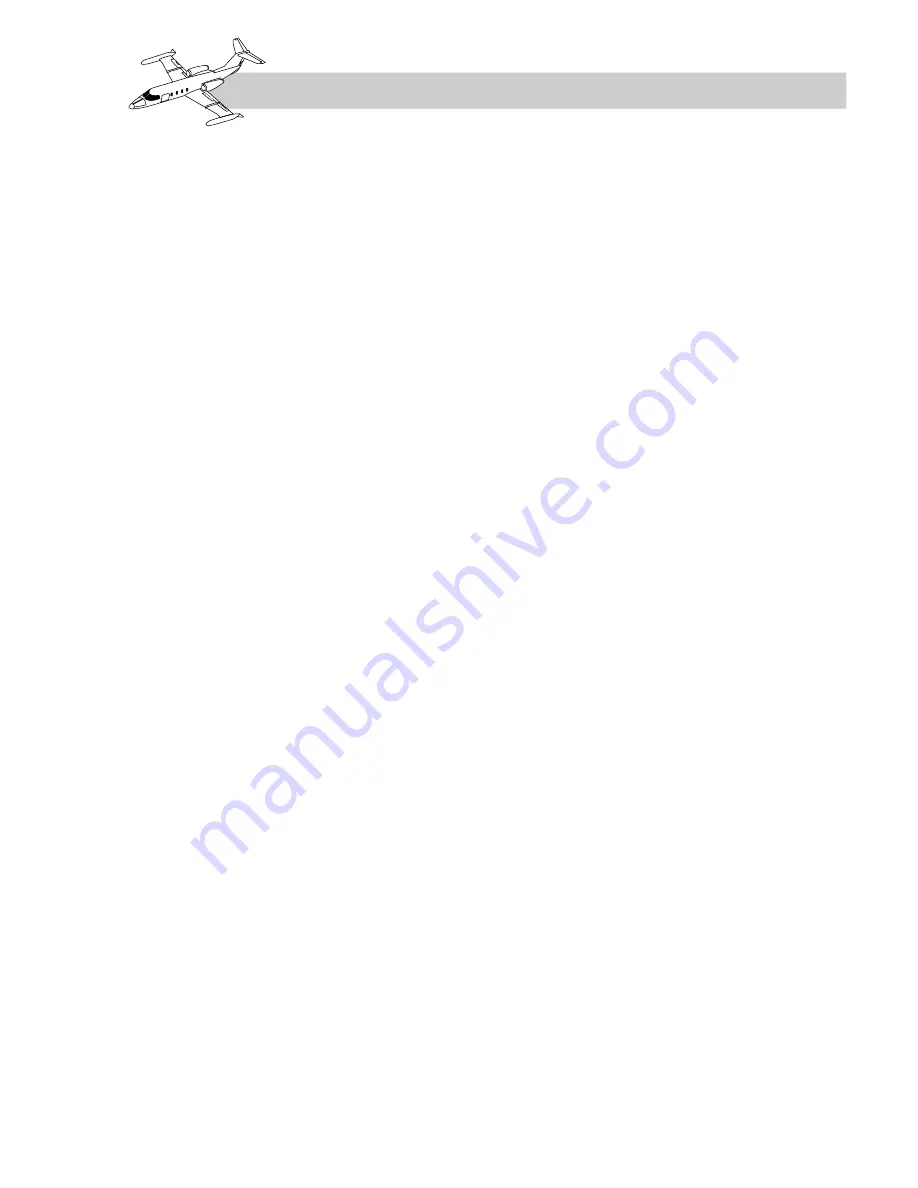
7-15
FOR TRAINING PURPOSES ONLY
LEARJET 20 SERIES PILOT TRAINING MANUAL
FlightSafety
international
holes in the aft flange of the inner combustion
casing and mating flanges. The air then flows
through the turbine wheel inner labyrinth seal
to pressurize the No. 3 bearing carbon seal.
The sumps are pressurized by seal leakage air
that enters the sumps.
Vent lines and check valves between the en-
gine sumps, gearboxes, and oil tank maintain
a controlled positive pressure between these
components.
The engine bleed-air system’s air is bled off
to control airflow and to supply air for heat-
ing, cooling, ventilation, and pressurization
purposes in the engine and airframe. The bleed
system functions as follows:
Part of the air bled from the compressor at the
eighth stage is bled into the front frame for
anti-icing. After the air heats the front frame
casing, struts, variable vanes, and the bullet,
it is discharged into the engine airstream.
Air is bled from the engine inlet duct into an
aspirator hose. It then flows to a bellows in the
main fuel control which senses the tempera-
ture of this inlet air for fuel scheduling.
Part of the compressor eighth-stage discharge
air is bled off to pressurize the carbon oil
seals. Part of the combustion cooling air flows
into the turbine area through holes in the aft
flange and mating flanges of the inner com-
bustion casing where it cools the turbine noz-
z l e a n d o p p o s e s f o r wa r d r o t o r t h r u s t b y
pressurizing the balance piston chamber.
The air bled from the compressor at the third,
fourth, and fifth stages is metered overboard
as scheduled by the fuel controller to maintain
air- flow stability within the compressor and
to prevent compressor stalls.
Some of the compressor discharge air is bled
off through two main frame ports for pressur-
ization and heating of the airplane cabin,
windshield defog, wing heat, pressurization
jet pump, and, on 24-297 and subsequent and
25-135, -181 and subsequent, for hydraulic
reservoir pressurization. On 24-350, -352 and
subsequent and 25-227 and subsequent, it is
also used for windshield-radome alcohol and
cabin temperature and pressurization control.
The sump center vent system is designed to
maintain a controlled positive pressure in the
front bearing sump, main sump, gearcase, and oil
tank. Maintaining a positive pressure makes the
lube system sensitive to altitude changes.
Controlled carbon seal leakage for the system is
the source of pressurizing air.
ENGINE POWER
CONTROL
GENERAL
The engine power control consists of a thrust
lever located on the center console (Figure
7-13). The thrust lever operates in a quadrant
f r o m t h e f u l l a f t , o r C U T O F F, p o s i t i o n
through an IDLE position to a full forward,
or maximum thrust, position. The thrust lever
slot has a gate at the IDLE position to pre-
vent the inadvertent selection of CUT OFF.
The lever must be pulled left and moved aft
to select CUT OFF.
Airplanes fitted with thrust reversers have re-
verse levers (Figure 7-13) piggyback-mounted
on the thrust levers and have a release at the
rear base of the thrust lever that must be raised
to allow the lever to be moved to the CUT
OFF position.
FRICTION CONTROL
A friction control twist knob located on the right
side of the center console (Figure 7-13) is used to
set friction for both thrust levers. Forward or
clockwise rotation increases friction.















































